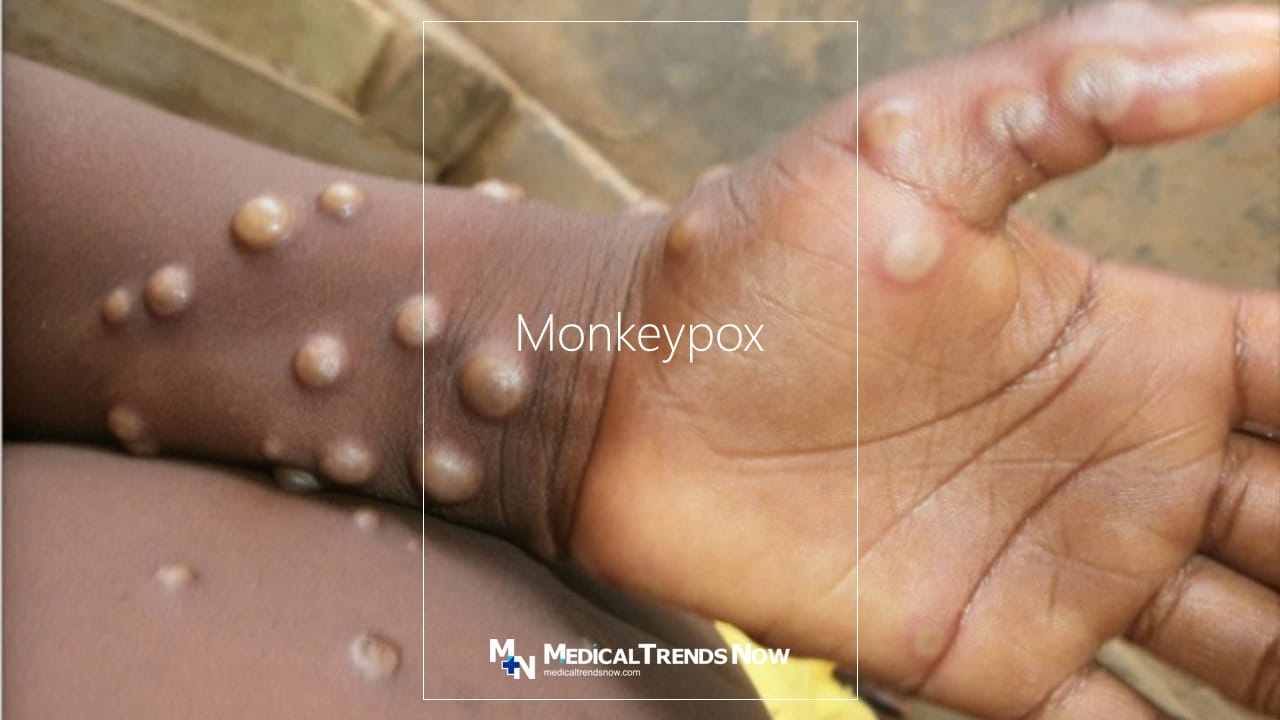Table of Contents
What is monkeypox? How contagious is it?
Key facts
- A virus causes monkeypox in the Orthopoxvirus genus, part of the family Poxviridae. It can be deadly to people if not treated properly.
- Monkeypox is a zoonotic viral disease that occurs primarily in tropical rainforest areas of Central and West Africa and is occasionally exported to other regions. The disease can be deadly to humans if not treated properly.
- Monkeypox is a highly contagious viral disease that typically presents with fever, rash, and swollen lymph nodes. It can lead to a range of medical complications.
- Monkeypox is a self-limited disease that typically has a two- to the four-week duration of symptoms. Severe cases can occur, with around three to six percent of a case fatality ratio.
- Monkeypox is a virus that can be spread through close contact with an infected person or animal or with material contaminated with the virus. It is most commonly transmitted through saliva, mucus, blood, or other body fluids from an infected person. Monkeypox can also be contracted if you come in contact with the material that the monkeypox virus has contaminated.
- Monkeypox is a highly infectious virus spread through close contact with lesions, body fluids, respiratory droplets, and contaminated materials.
- The clinical presentation of monkeypox is similar to that of smallpox, an orthopoxvirus infection that was declared eradicated worldwide in 1980. Monkeypox is less contagious than smallpox and causes less severe illness.
- Since the vaccine for smallpox is limited, newer vaccines protect against zoonotic viral disease. One of these new vaccines has been approved for use in preventing monkeypox.
- A licensed antiviral agent developed to treat smallpox is also effective against zoonotic viral disease.
Introduction to Monkeypox
Monkeypox is a viral zoonosis that causes symptoms similar to those seen in past smallpox patients, although it is clinically less severe. Its spread primarily in Central and West Africa and its presence increasingly in urban areas. The virus was eradicated in 1980 but has resurfaced as the most critical orthopoxvirus for public health.
The pathogen
Monkeypox virus is a double-stranded DNA virus that belongs to the Orthopoxvirus genus of the Poxviridae family. The monkeypox virus has two genetic clades – the Central African (Congo Basin) clade and the West African clade. The Central African Clade has historically caused more severe disease and was thought to be more transmissible. The geographical division between these two clades has been in Cameroon – the only country where both virus clades have been found.
The natural host of the monkeypox virus
Monkeypox is a highly contagious virus that can affect different animal species, including rope squirrels, tree squirrels, Gambian pouched rats, dormice, non-human primates, and other animals. While the natural history of zoonotic viral disease is still uncertain, and further studies are needed to understand better how virus circulation is maintained in nature, it’s possible that this virus could be spread from one animal to another through contact with respiratory secretions or blood.
Signs and symptoms
Monkeypox usually takes 6 to 13 days to incubate, but it can range from 5 to 21 days.
The infection can be divided into 2 phases:
- Monkeypox is an acute, contagious disease characterized by fever, intense headache, lymphadenopathy (swelling of the lymph nodes), back pain, myalgia (muscle aches), an intense asthenia (lack of energy). Symptoms typically last between 0 and 5 days.
- The rash commonly appears within 1-3 days of the fever’s onset and is more concentrated on the face and extremities. It affects 95% of cases on the face, 75% of cases in palms of hands and feet, 70% in oral mucous membranes, 30% in genitalia, 20% in conjunctivae, and 10%-15% overall. The rash typically begins as small, flat lesions that quickly evolve into larger, raised papules or pustules. These may eventually turn into vesicles and then crusts which fall off. Lesions can vary in number from a few to several thousand. In severe cases, lesions can coalesce until large sections of skin slough off.
Monkeypox is a self-limited disease that typically has symptoms lasting 2 to 4 weeks. Severe cases occur more commonly among children and are related to the extent of virus exposure, patient health status, and nature of complications. Underlying immune deficiencies may lead to worse outcomes. Although vaccination against smallpox was protective in the past, it is no longer currently effective, so persons younger than 40 years old can be more susceptible to monkeypox due to the cessation of smallpox vaccination campaigns globally after eradicating the disease.
Complications of zoonotic viral disease can include secondary infections, bronchopneumonia, sepsis, encephalitis, and cornea infection. The extent to which asymptomatic infection may occur is unknown.
The case fatality ratio of monkeypox has historically ranged from 0 to 11 % in the general population, but it has been higher among young children. Recently, the case fatality ratio has been around 3-6%.
Diagnosis
During the prodromal stage of illness, lymphadenopathy can be a clinical feature to distinguish monkeypox from chickenpox or smallpox. Other rash illnesses, such as chickenpox, measles, bacterial skin infections, scabies, syphilis, and medication-associated allergies must also be considered in the differential diagnosis.
If monkeypox is suspected, health workers should collect a sample and transport it safely to a laboratory that has the necessary capability to confirm the diagnosis. The confirmation of zoonotic viral disease depends on the type and quality of the specimen and the type of laboratory test. PCR is the most accurate and sensitive laboratory test for diagnosing monkeypox. For this, optimal diagnostic samples are from skin lesions – the roof or fluid from vesicles and pustules, and dry crusts. Where feasible, a biopsy may be an option. Lesion samples must be stored in a dry, sterile tube (no viral transport media) and kept cold. Blood tests are usually inconclusive because of the short duration of viremia relative to the timing of specimen collection after symptoms begin; however, they should not routinely be collected from patients with monkeypox.
There is no specific test that can confirm the infection, so serologic methods (e.g. antibody testing) and antigen detection are not recommended for diagnosis or case investigation where resources are limited. Additionally, recent or remote vaccination with a vaccinia-based vaccine might lead to false-positive results.
To correctly interpret test results, it is important that patient information be provided with the specimens, including:
- date of onset of fever;
- date of commencement of rash;
- date of specimen collection;
- current status (stage) of the individual’s rash and age.
Therapeutics
Monkeypox should be treated to alleviate symptoms, manage complications, and prevent long-term sequelae. Patients should be offered fluids and food to maintain good nutritional status. Secondary bacterial infections should be treated as indicated. An antiviral agent known as tecovirimat developed for smallpox is licensed by the European Medical Association (EMA) for zoonotic viral disease in 2022 based on animal and human studies data. It is not yet widely available but may become available in the future.
If used for patient care, tecovirimat should preferably be monitored with prospective data collection in a clinical research context.
Vaccination
Several observational studies have demonstrated the effectiveness of vaccination against smallpox, with an overall efficacy rate of about 85%. Those who have had prior vaccinations may experience milder illness if they contract smallpox. The original (first-generation) smallpox vaccines are no longer available for general use. Some laboratory personnel or health workers may have received a more recent smallpox vaccine to protect them in the event of exposure to orthopoxviruses at work. A newly approved vaccine against zoonotic viral disease is based on a modified attenuated vaccinia virus. This vaccine is only available in two doses, and availability remains limited. Smallpox and monkeypox vaccines are developed using the same vaccinia virus as a basis for protection against other orthopoxviruses because of cross-protection afforded by the immune response.
Monkeypox is a highly contagious and potentially deadly virus that can cause severe illness in humans. Monkeypox is a rare virus that causes fever, headache, muscle aches, and exhaustion in humans. It can also be spread through contact with the blood or bodily fluids of an infected person or animal. There is no specific treatment for zoonotic viral disease, but antiviral drugs may help treat the symptoms. The best way to prevent monkeypox is to avoid contact with people who are infected and animals that may have been exposed to the virus.
Transmission: How is monkeypox spread?
Monkeypox is a rare disease that is caused by a virus. It is similar to smallpox, but it is not as severe. Monkeypox is spread through contact with the blood, body fluids, and cutaneous or mucosal lesions of infected animals or an infected person. It can also be spread through contact with objects or surfaces that have been contaminated with the virus. The virus can also be spread through the air, but this is rare.
Symptoms: What are the symptoms of monkeypox?
Monkeypox is a rare viral illness that occurs primarily in central and western Africa. The zoonotic viral disease is similar to the smallpox virus, and viruses in the family Poxviridae cause both diseases. Monkeypox causes a rash, fever, and body aches. The rash starts as small red bumps on the face that spread to the rest of the body. The bumps become pus-filled lesions that scab over. Other symptoms include headache, chills, diarrhea, and vomiting. Monkeypox can be fatal in up to 10% of cases. There is no specific treatment for virus, and it is usually treated with supportive care.
Treatment: How is monkeypox treated?
There is no known cure for monkeypox, but the smallpox vaccine, antivirals, and vaccinia immune globulin can help treat symptoms.
The Jynneos vaccine (Imvamune or Imvanex) is indicated for zoonotic viral disease. It is an attenuated, live-virus vaccine that cannot replicate in the human body.
Prevention: How can you prevent monkeypox?
The best way to prevent the virus is to avoid close contact with any animals suspected of carrying the virus. If you do get monkeypox, seek medical attention immediately. Treatment includes antibiotics and rest.
Conclusion: What is monkeypox?
Monkeypox is a contagious virus that can cause severe illnesses in humans. The virus is most commonly spread through contact with an infected person’s respiratory secretions (such as saliva or mucus). It can also be spread through close contact with an infected animal. Symptoms of monkeypox include fever, headache, muscle aches, and rash. In severe cases, monkeypox can lead to pneumonia and even death. There is no specific treatment for monkeypox, but it can be managed with supportive care. Anyone who contracts monkeypox should contact their doctor immediately for advice on best managing the infection.














